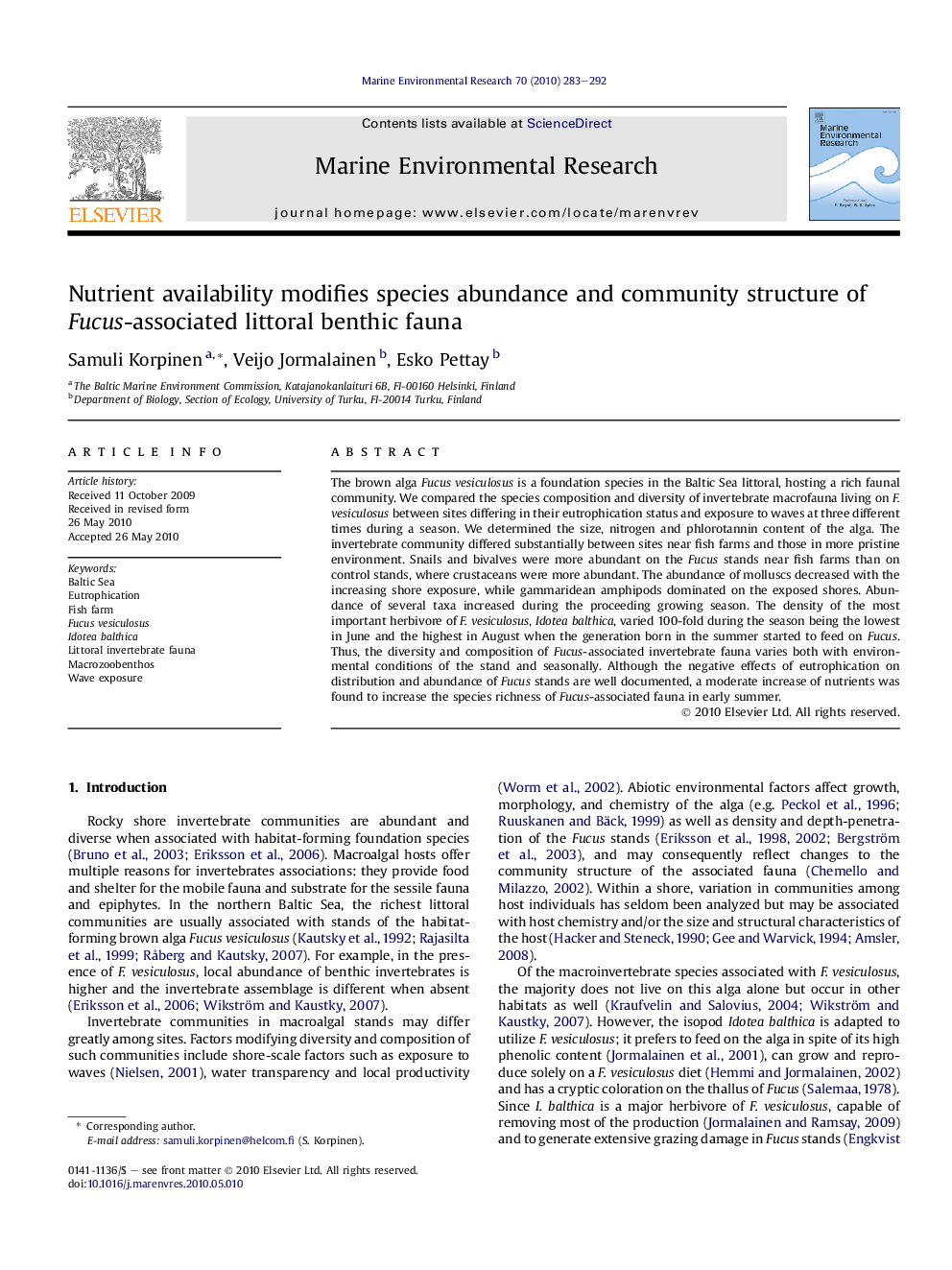| Article ID | Journal | Published Year | Pages | File Type |
|---|---|---|---|---|
| 4551222 | Marine Environmental Research | 2010 | 10 Pages |
Abstract
The brown alga Fucus vesiculosus is a foundation species in the Baltic Sea littoral, hosting a rich faunal community. We compared the species composition and diversity of invertebrate macrofauna living on F. vesiculosus between sites differing in their eutrophication status and exposure to waves at three different times during a season. We determined the size, nitrogen and phlorotannin content of the alga. The invertebrate community differed substantially between sites near fish farms and those in more pristine environment. Snails and bivalves were more abundant on the Fucus stands near fish farms than on control stands, where crustaceans were more abundant. The abundance of molluscs decreased with the increasing shore exposure, while gammaridean amphipods dominated on the exposed shores. Abundance of several taxa increased during the proceeding growing season. The density of the most important herbivore of F. vesiculosus, Idotea balthica, varied 100-fold during the season being the lowest in June and the highest in August when the generation born in the summer started to feed on Fucus. Thus, the diversity and composition of Fucus-associated invertebrate fauna varies both with environmental conditions of the stand and seasonally. Although the negative effects of eutrophication on distribution and abundance of Fucus stands are well documented, a moderate increase of nutrients was found to increase the species richness of Fucus-associated fauna in early summer.
Related Topics
Physical Sciences and Engineering
Earth and Planetary Sciences
Oceanography
Authors
Samuli Korpinen, Veijo Jormalainen, Esko Pettay,
